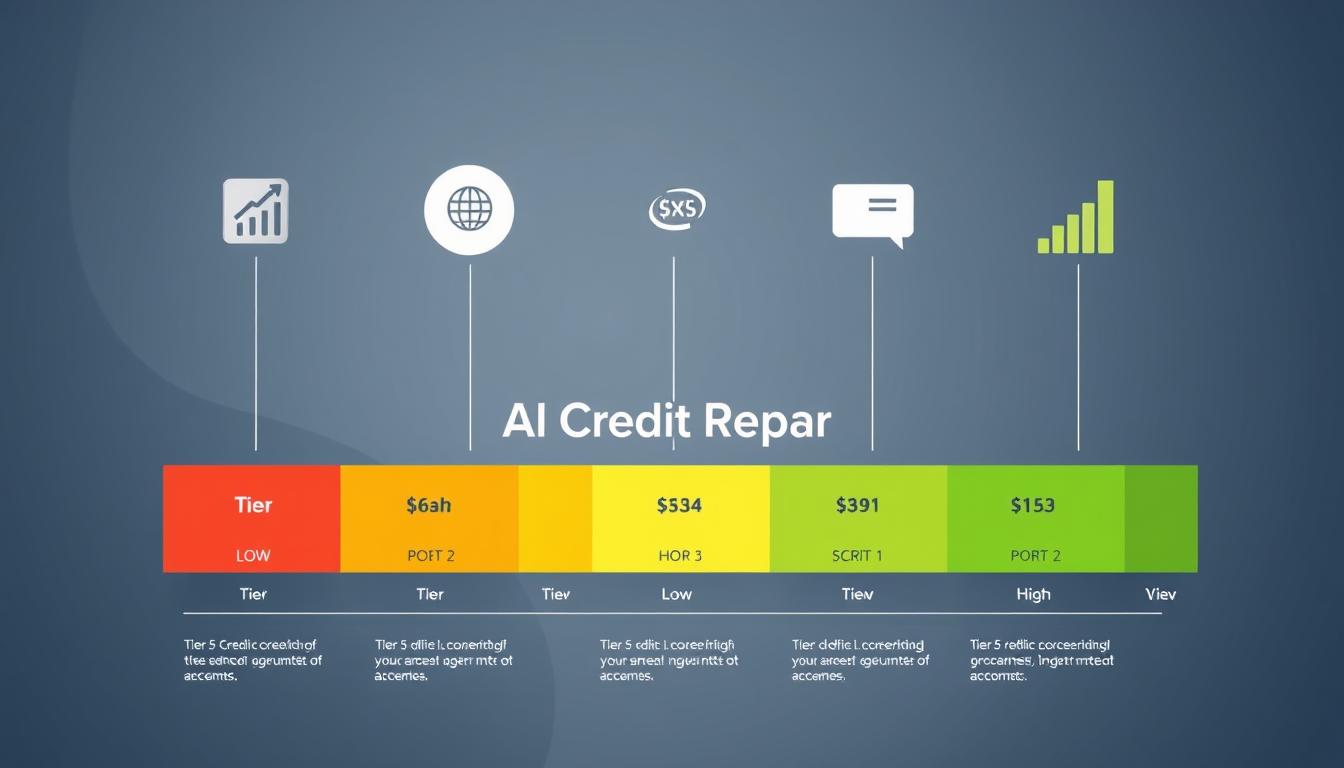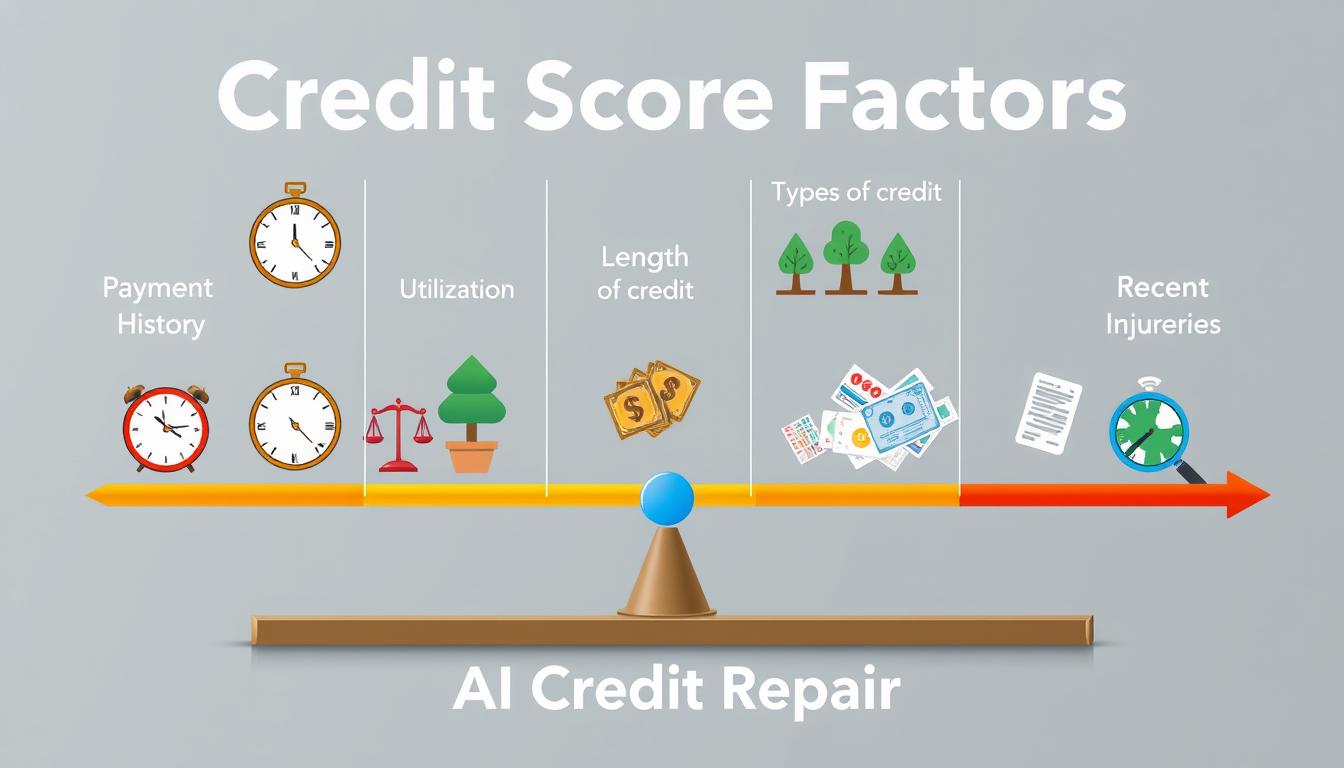Your credit score greatly impacts your financial opportunities. A tier 5 credit score, the lowest tier, can significantly affect your financial well-being. Let’s explore what a tier 5 score means and how to improve it.
We’ll examine the implications of this low score. We’ll also discuss strategies to boost your creditworthiness. With the right approach, you can work towards a better financial future.
Key Takeaways
- Tier 5 credit scores range from 500 to 600, indicating a high credit risk.
- A tier 5 credit score can limit your access to credit, increase interest rates, and make it challenging to secure loans or rental agreements.
- Paying bills on time, reducing credit card balances, and monitoring your credit report are key strategies to improve a tier 5 credit score.
- Patience and persistence are crucial when working to rebuild your credit score from the tier 5 level.
- Seeking professional assistance, such as credit counseling, can provide valuable guidance and support in your credit improvement journey.
Understanding Your Credit Score Tiers
Credit scores are crucial for your financial health. They’re split into tiers that show how creditworthy you are. Knowing these tiers helps you understand your financial standing.
FICO and Vantage are the main credit scoring models in the US. They rank scores from 300 to 850. Lower scores mean higher lending risk. Higher scores lead to better lending terms.
Credit Score Tiers Explained
Credit scores are typically divided into these tiers:
- Excellent Credit: 800 to 850
- Good Credit: 700 to 799
- Fair Credit: 600 to 699
- Poor Credit: 500 to 599
- Very Poor Credit: 300 to 499
These tiers may differ slightly between scoring models and lenders. Knowing your score’s place helps you make smart financial choices.
Stay informed about credit score tiers and their effects. This knowledge helps you maintain a healthy credit profile. It can lead to greater financial success.
What Is a Tier 5 Credit Score?
A tier 5 credit score falls in the “poor” or “bad” range. It typically ranges from 500 to 579 on the FICO model. On the VantageScore model, it spans from 500 to 600.
This score signals high risk to lenders. It makes getting loans or financial products much harder. Favorable terms become almost impossible to secure.
Credit Score Ranges for Tier 5
Tier 5 credit scores have specific ranges:
- FICO Score Range: 500 to 579
- VantageScore Range: 500 to 600
These low scores often result from late payments and high credit card balances. They can also stem from other financial struggles.
A tier 5 score can hinder loan approvals and credit card applications. It may even affect housing rentals and job opportunities.
| Credit Score Model | Tier 5 Credit Score Range |
|---|---|
| FICO | 500 to 579 |
| VantageScore | 500 to 600 |
Knowing your tier 5 credit score is key to improving your finances. By addressing the causes, you can boost your score.
Gradually, you can work towards a higher tier. This will open up better financial options for you.

The Significance of a Tier 5 Credit Score
A tier 5 credit score can greatly affect your financial health. It makes getting loans, credit cards, or rental housing very difficult. This low score often leads to higher interest rates or needing a cosigner.
People with tier 5 credit face many financial roadblocks. Individuals with this level of creditworthiness often face financial obstacles that can hinder their ability to achieve their financial goals. It can stop them from reaching financial stability and growth.
| Credit Score Range | Impact on Financing | Potential Challenges |
|---|---|---|
| Tier 5 (300-579) | Difficulty obtaining loans, credit cards, or rental housing; Higher interest rates; Requirement for a cosigner | Limited access to credit, high-interest rates, and potential barriers to securing housing or other financial products |
Knowing the impact of a tier 5 credit score is crucial. It helps people take steps to improve their credit. By doing so, they can unlock better financial opportunities.
A tier 5 credit score can significantly limit your financial options and impose higher costs, making it crucial to understand the importance of maintaining a healthy credit profile.
Factors Contributing to a Tier 5 Credit Score
A tier 5 credit score results from various factors affecting your creditworthiness. Knowing these factors helps you create a plan to boost your credit standing.
Learning about these influences is key to improving your overall credit profile. It’s crucial to understand how each element impacts your score.
Payment History
Late or missed payments are a major cause of tier 5 credit scores. Payment history makes up 35% of your total credit score.
Consistently paying on time is vital for a strong credit profile. This applies to credit cards, loans, and other financial obligations.
Credit Utilization Ratio
A high credit utilization ratio can lead to a tier 5 credit score. This measures how much available credit you’re using.
Experts suggest keeping your credit use below 30% for a healthy score. High credit card balances can quickly result in a tier 5 score.
| Factor | Impact on Credit Score |
|---|---|
| Payment History | 35% of total credit score |
| Credit Utilization Ratio | 30% of total credit score |

Knowing these key factors helps you take steps to improve your credit profile. Positive payment habits and low credit use are crucial for this process.
By focusing on these areas, you can work towards achieving a higher credit score. Remember, small changes can lead to significant improvements over time.
Challenges Faced with a Tier 5 Credit Score
A tier 5 credit score can make managing finances tough. Lenders often see these consumers as high-risk borrowers. This can lead to denied loan applications, credit cards, and even rental agreements.
Securing financing is a major hurdle for those with tier 5 credit. Lenders may hesitate to approve loans or credit cards. This makes it hard to fund big purchases or consolidate debts.
Renting can also be tricky with poor credit. Landlords often check credit scores before approving tenants. They might worry about non-payment or property damage risks.
These financial obstacles with bad credit can limit access to essential services. They can make reaching financial goals harder. However, with the right approach, improving your credit score is possible.
Strategies to Improve Your tier 5 credit score
Boosting a tier 5 credit score may seem tough. But there are effective ways to rebuild your creditworthiness. Focus on positive payment habits and reducing credit card balances.
Developing Positive Payment Habits
To improve your tier 5 credit score, establish a consistent, positive payment history. Pay all monthly bills on time, every time. Even one late payment can hurt your score.
Set up automatic payments or reminders to avoid missing due dates. Keep open communication with creditors. They may offer payment plans or temporary relief if needed.
Reducing Credit Card Balances
Another key strategy is lowering your credit card balances. High credit utilization ratios can negatively impact your score. Reducing debt shows lenders you’re a responsible borrower.
Create a debt repayment plan. Allocate part of your monthly budget to paying down credit card balances. Avoid new purchases on credit cards.
Instead, focus on paying existing balances. This approach can improve your credit utilization ratio and overall score.

“Improving your credit score is a marathon, not a sprint. With patience and persistence, you can steadily climb the credit score tiers and achieve your financial goals.”
Monitoring Your Credit Report
Monitoring your credit report regularly is crucial for a healthy credit score. By reviewing your credit report, you can address disputes or errors promptly. This ensures accurate credit information and helps improve your creditworthiness.
Watching your credit report helps spot potential issues like unauthorized accounts or identity theft. Fixing these problems can significantly boost your credit score. Unresolved errors can make getting good financing terms harder.
Obtain your credit report from Experian, Equifax, and TransUnion yearly. Review each section carefully, including personal info, account history, and credit use. If you find inaccuracies or errors, dispute them with the appropriate credit bureau.
Follow up on disputes until they’re resolved. This ensures your credit report accurately shows your credit history. By staying on top of your credit report, you’ll set yourself up for financial success.
- Obtain your credit report from the three major credit bureaus (Experian, Equifax, and TransUnion) at least once a year.
- Carefully review each section of your report, including your personal information, account history, and credit utilization.
- If you identify any inaccuracies or errors, promptly dispute them with the appropriate credit bureau.
- Follow up on the dispute until it is resolved, ensuring that your credit report accurately reflects your credit history.
“Regularly reviewing your credit report is the best way to catch and correct any errors that could be negatively impacting your credit score.”
The Importance of Patience and Persistence
Boosting your Tier 5 credit score takes time and effort. Long-term credit score strategies are key to lasting success. Patience and persistence are vital in this journey.
Building a strong credit profile doesn’t happen overnight. Your score may not show positive changes right away. Keep working towards your goals for a brighter financial future.
Persistence is crucial for patience in credit score improvement. Pay bills on time and reduce credit card balances. Regularly check your credit report for accuracy.
Stay dedicated to your credit-building efforts. It’s a step-by-step process that requires unwavering commitment. Your hard work will pay off in the long run.
“The road to credit score recovery is paved with patience and persistence. Embrace the journey, and you’ll be rewarded with a stronger financial foundation.”
Improving a Tier 5 credit score is a marathon, not a sprint. Stay focused on your long-term credit score strategies. With time, you’ll overcome challenges and reach your financial goals.

Seeking Professional Assistance
Struggling with a tier 5 credit score? Professional help can be a game-changer. Credit counseling services, credit repair companies, and financial advisors offer expert guidance. They can help you build credit and create a personalized improvement plan.
Credit counseling services explain your credit report and help create a budget. They often negotiate with creditors for better terms and lower interest rates. This makes debt repayment easier and improves your credit score.
Credit repair companies review your credit report for errors. They dispute inaccuracies with credit bureaus on your behalf. Removing negative items can significantly boost your credit score.
A financial advisor for credit score improvement provides a comprehensive approach. They assess your overall financial situation. These experts create strategies to address credit challenges and guide long-term credit rebuilding.
Improving your credit score requires time and effort. With the right support, you can achieve your financial goals. A stronger financial future is within reach.
Conclusion
Understanding and improving a tier 5 credit score can be challenging. However, with the right strategies, you can build a stronger financial future. A proactive approach is key to success.
Addressing factors like payment history and credit utilization is crucial. Developing good financial habits and reducing debt will help improve your score. Consistently monitoring your credit report is also important.
Credit score management requires patience and persistence. It’s an ongoing process that takes time. With the right tools and guidance, you can navigate the credit system effectively.
Remember, a tier 5 credit score is just a starting point. From here, you can build a stronger credit profile. This will help you achieve your financial goals over time.

